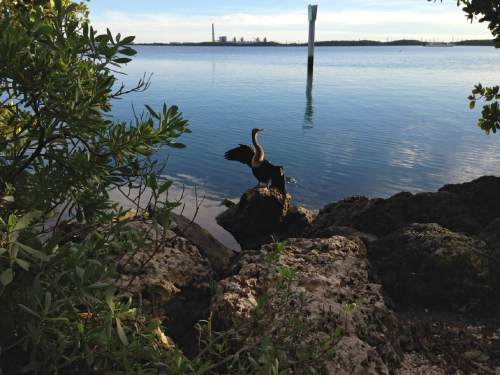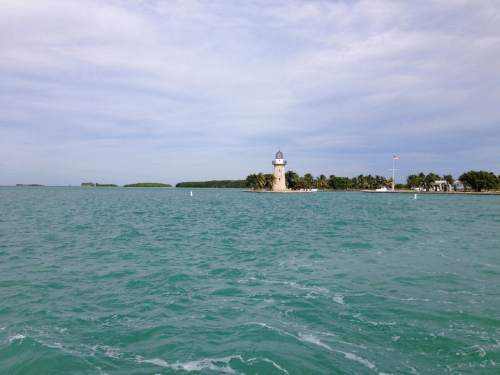This is an archived article that was published on sltrib.com in 2016, and information in the article may be outdated. It is provided only for personal research purposes and may not be reprinted.
Coming from Utah, it's hard to imagine a national park with views of a city skyline. Sure, Zion Canyon may at times feel like Times Square, but our parks still are fundamentally rural.
Biscayne National Park comes within 6 miles of downtown Miami. Its boundary is shared with a major nuclear plant, whose cooling canals were found to be leaking polluted water into the park this spring. There are a lot of motor boats; The docks at Boca Chita Key were hopping with party people and loud music when I was there. I even saw a Miami police boat race by with its lights and sirens on, followed by news helicopters.
(OK, that was kind of cool.)
Anyway, these factors give Biscayne a relatively high profile on national park advocates' most-threatened lists. Rising water temperatures can produce algae blooms that smother coral. Boats bonk into the coral and damage hundreds of square feet of reef each year, while propellors scar seagrass communities which provide nursery grounds for many fish, park officials say. A 2001 report showed that 77 percent of the fish stocks studied were overfished — and nearby human population, fishing licenses and boat registrations have increased since then. The park had planned to ban fishing in 6 or 7 percent of the park to promote its marine life, but Florida's Congressional representatives are trying stop that, claiming it's not worth the cost to fishing interests since Biscayne has other problems, too. Development nearby has knocked out a lot of mangrove communities, which are important for fish at the bottom of the food chain — i.e., the ones that support the fish people like to catch.
And, of course, rising sea levels could eventually drown the park.
Meanwhile, on the immediate, visitor-experience front: The park's concessioner providing boat shuttles and kayak rentals closed up shop in 2013, just months after receiving a 10-year contract. That is a bad situation in a park that is 95 percent covered with water. Those without boats mostly have had to stick to the visitors center; the park's main hiking trails and campgrounds are on the keys, and the snorkeling and diving destinations are far from shore.
Yes, Biscayne has taken some knocks in recent years.
But I have to say: This is one plucky little park. After searching for years for a boating concessioner, the park in January got its own catamaran to take tourists to the Boca Chita lighthouse.
My family and I took the first boat tour the park had run in more than two years!
We learned about the ancient Florida savanna that now is underwater as we made our way to the 1930s lighthouse for a picnic. After that, we went to the visitors center museum, which is one of the best I've seen in my yearlong tour of national parks. The rangers probably were the most attentive that I have met so far.
And the shoreline hike to Convoy Point is truly beautiful, the Turkey Point Nuclear Generating Station notwithstanding. My daughter earned a Junior Ranger badge, and the family left happy.
Biscayne is a worthy reminder that no place is an island. The mangrove forests, the coral reefs, the seagrass beds, the birds, the bugs, the plants and the people all affect each other. The park shows, in a really dramatic way, how important each of us is to the balance.
This short hike provides lovely ocean views and, in very little space, an up-close look at a lot of life. We saw all sorts of birds, some fish, and a nice sampling of south Florida's dramatically-sculptural plant life. The trailhead is near the parking lot, just north of the visitors center. The hike bends south on a bordwalk and follows a peninsula to a viewpoint about 0.4 miles from the start. You can view the path on Google Maps.
Next national park trip report — No. 6, Everglades: Please don't spank the gator
Previous national park trip reports
12 Months of National Parks — No. 1, Acadia: Small children love nature, but on their own level
12 Months of National Parks — No. 2, Capitol Reef: 'People shouldn't be here'
12 Months of National Parks — No. 3, Arches: Are national park rules too strict?
12 Months of National Parks — No. 4, Canyonlands: The best fun may require a child's eyes
—Erin Alberty
ealberty@sltrib.com
Twitter: @erinalberty







